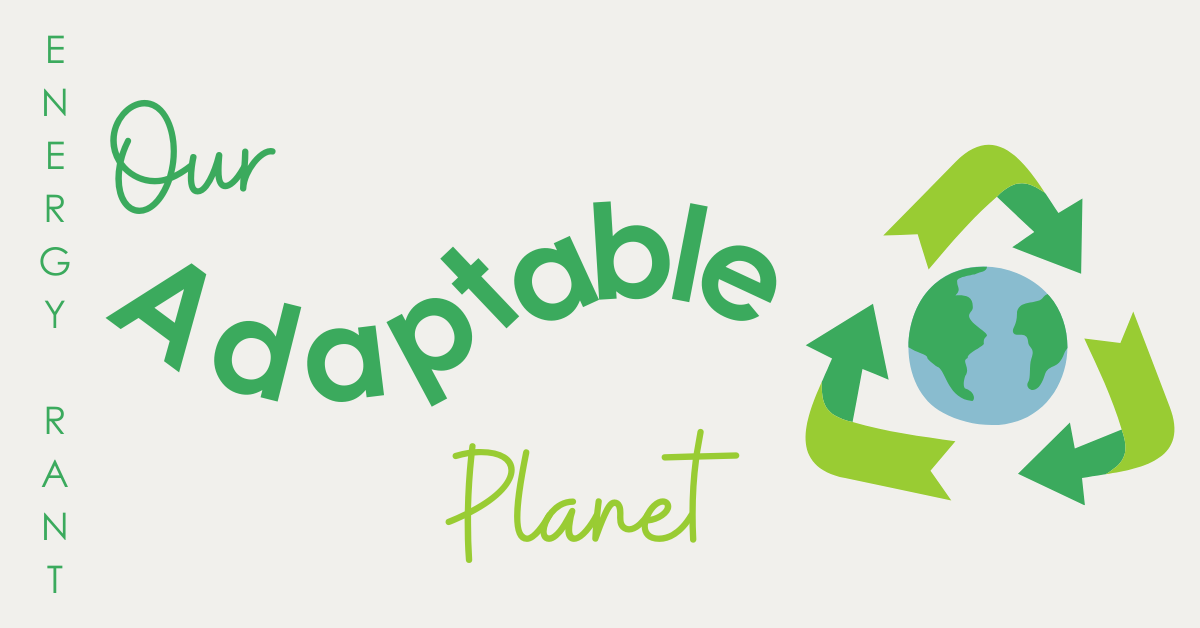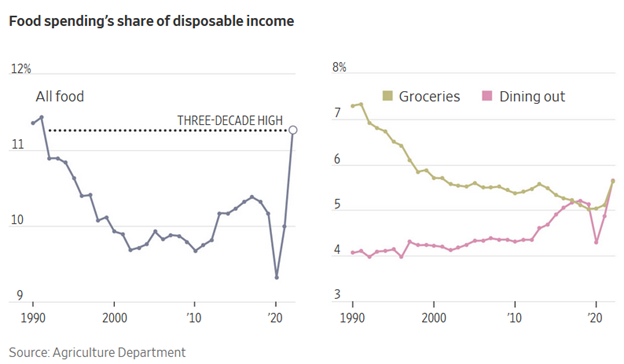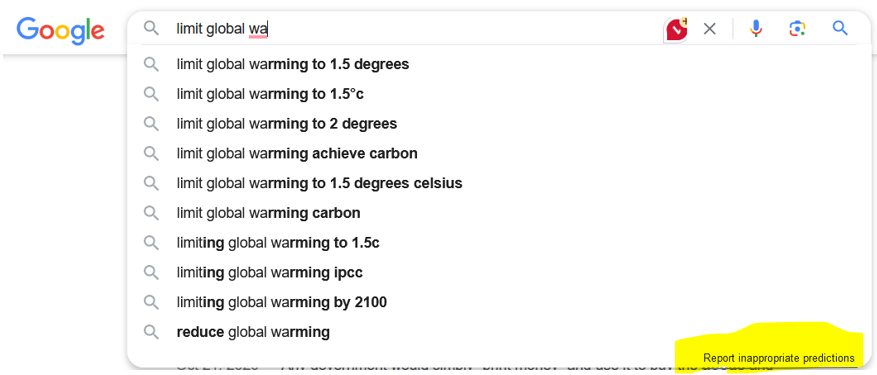
For years, I wondered how the national debt would result in Great Depression-level pain and a reset not unlike bankruptcy. The national debt doesn’t need to be paid back like we often hear or read in the news. It just needs to be maintained at manageable levels, defined as not letting the borrowing cost get to a prompt supercritical situation that overwhelms everything else. Financing costs are becoming alarmingly high – already more than we spend on national defense – about $1 trillion annually.
When tax revenues to finance the debt are insufficient, or if debt markets bomb, the Federal Reserve steps in with its trickery, including creating money out of thin air and using that money to purchase devalued securities from commercial banks. This is inflationary. In case you haven’t shopped for groceries or eaten out lately, the following charts paint the picture.
 How does the Federal Reserve fight inflation? Raise interest rates, which increases debt-financing costs and crushes tax revenue. Financing costs lag because treasury notes and bonds turn over every two to thirty years.
How does the Federal Reserve fight inflation? Raise interest rates, which increases debt-financing costs and crushes tax revenue. Financing costs lag because treasury notes and bonds turn over every two to thirty years.
Also, bond prices move in the opposite direction of interest rates. The 2022 bond market was the worst since, wait, uh, EVER – In the planet’s history. My financial advisor seems to think things are headed back to normal. I disagree because of the vortex I just described. This is predictable – our climate and the impacts of change, not as much.
Climate Change
What about climate change? This is far less clear to me. The climate is changing, as it always has, but the dynamics are poorly understood, and no one knows the end result. For example, junk on the internet is inconsistent. Is the point of no return and global destruction triggered at a 1.5 degree C increase or a 2.0 degree C increase? Per my Google search below, there doesn’t seem to be a consensus among the soothsayers. Notice in the highlighted part that Google doesn’t want any challenges to the status quo. What is inappropriate, Sundar? Three degrees? Five degrees? For millions of years before the industrial revolution, planet temperatures varied by about 10C.
 Per consensual thought, temperatures rise in lockstep with CO2 levels. But what happens when we breach 1.5 or 2.0C barriers and wake up in the morning to realize the sun has risen, and we see ourselves in the mirror?
Per consensual thought, temperatures rise in lockstep with CO2 levels. But what happens when we breach 1.5 or 2.0C barriers and wake up in the morning to realize the sun has risen, and we see ourselves in the mirror?
My observations make me think we’re already beyond 2C. Since I posted the shattered ChuckIt photo a few weeks ago, we’re back to 40 and 50-degree F weather here in the upper Midwest. We had twelve days of winter measured in snow and cold temperatures, with a month and a half before and after that with weather that wouldn’t freeze a pond – I had never experienced anything like it. It’s crazy warm. Ice fishing, sled dog, ski races, and snowmobile trips have been canceled. Did I mention Great Depression? The winter tourism industry is living it now.
Is CO2 the Chicken or the Egg?
Carbon dioxide levels are rising; some say it is because the earth is warming, rather than the climate is warming because of increasing CO2. There is some validity to this because water (oceans) can hold less dissolved gases, like oxygen and carbon dioxide, at warmer temperatures. A NASA climate scientist agrees there is merit to the theory.
Global temperature is a weak function of CO2. There are many images like the following one circulating on the internet. That may look strong and scary, but it’s not. Like the ideal gas law, the absolute temperature, not the relative temperature, is a function of CO2. Fahrenheit and centigrade are relative temperatures. Rankine and Kelvin are absolute scales, respectively. The average global temperature last year was 15.1C, or 288.2 degrees Kelvin. While CO2 levels have increased 41%, the global temperature is up only 0.4%.
 Self-Correcting Nature
Self-Correcting Nature
Last month, I chronicled three air-ball predictions of global doom from the 1970s. Specifically, we would be buried under miles-deep sheets of ice, starved, and we would have no oil or natural gas – not that we would need oil or gas as crushed corpses under a mile of ice.
Nature and human ingenuity are amazing. We have energy surpluses, and the planet has greened tremendously in just the last 20 years, significantly due to more CO2 in the atmosphere. NASA reports, “The greening of the planet over the last two decades represents an increase in leaf area on plants and trees equivalent to the area covered by all the Amazon rainforests. There are more than two million square miles of extra green leaf area per year, compared to the early 2000s – a 5% increase.” For reference, the contiguous United States covers 3.1 million square miles, about the size of the Amazon rainforest.
How is this possible? Again, per NASA, “on a global scale, greening can be attributed to the increase of carbon dioxide in the atmosphere. Rising carbon dioxide levels increase the rate of photosynthesis and growth in plants.”
Not only does CO2 induce a fertilizing effect, but it also makes plants more water-efficient and drought-resistant. I only became aware of these things from a recent podcast, followed by the research linked in this post. The podcaster said elevated CO2 levels allow plants to breathe more efficiently, resulting in less water loss. This made some sense to me, so I investigated.
This paper, sponsored by elite academics, confirms this theory: “plant leaves are perforated by stomata, surface holes that allow CO2 to diffuse from the atmosphere into the leaf’s interior, where they are photosynthesized into carbohydrates. Depending on the relative humidity of the outside air, as many as 100 H2O molecules can diffuse out of the leaf for each CO2 molecule that diffuses in. This is why most land plants need at least 100 grams of water to produce one gram of carbohydrate.”
My Conclusions
- It’s warm.
- Tread lightly on the planet.
- Waste as little as possible.
- Nature is more trustworthy, adaptive, and resilient than humans.

